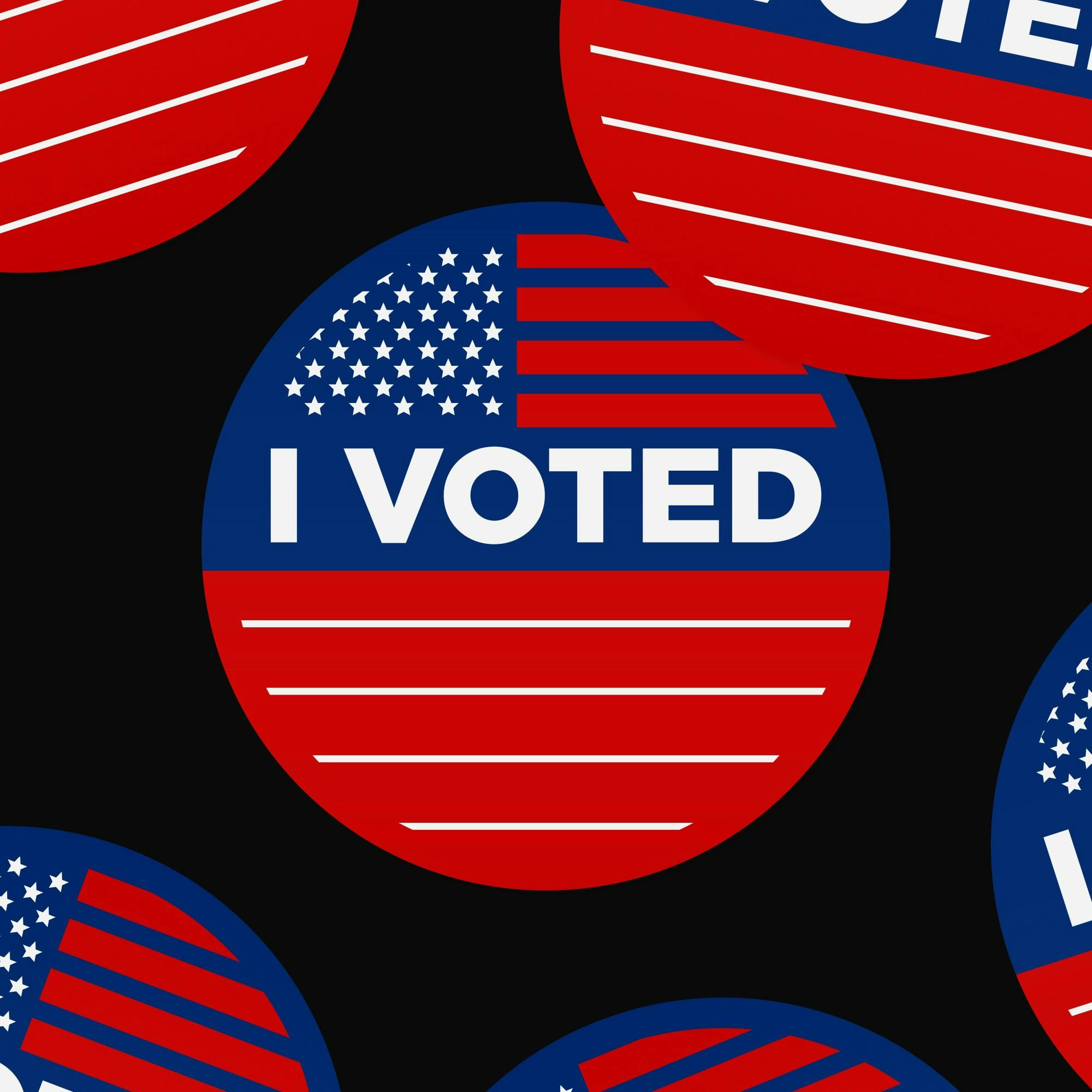Blog
There are seven months left until the general election, and there are still a number of primaries before the presidential candidates fully switch into general election mode. All may seem to be said and done when it comes to the presidential race. However, surprises can happen in down-ballot races where contenders for various offices are still battling it out in a number of states.
In this guide, we’ll take a look at the remaining primaries and caucuses occurring on and after April 13, 2024. We’ll also cover the essential information independent voters need to participate in these upcoming elections.
Understanding Primaries and Caucuses
First, it's vital to grasp the distinction between primaries and caucuses. Primaries are straightforward: you vote at your usual polling place, much like in the general election. Caucuses are more interactive, requiring participants to attend local meetings to discuss and vote for candidates.
While primaries are more common, a few states still hold caucuses. However, there are only two caucuses left in 2024: one Democratic caucus in Idaho on May 23, 2024, and the other — also for the Democratic nomination — on June 8, 2024 in Guam.
The next presidential primaries are on April 13, 2024, both for the Democratic Party, in Wyoming and Alaska. The last presidential primary, also for Democrats, is on June 7, 2024 in the U.S. Virgin Islands. There are several U.S. legislature, state house, and state senate races, as well as primaries for governor and runoffs in several states, happening up until September 10, 2024.
The Remaining Primary Elections
Before voting for any candidate, even in the primaries, it’s important to go to the polls armed with as much information as possible. Here’s what you’ll need to know to make an informed decision for president and state representatives in the remaining locations:
April to June 2024: The Final Stretch
The primaries after April 13 mark the final phase of the pre-nomination period. We’ll hear from voters in a mix of large and small states across various regions. If all goes as planned, the winners in various contests will go onto the general election with a slate of delegates who are pledged to support them.
Here’s a breakdown of what to expect:
Remaining Primaries in April 2024
The state of Alaska is holding their Democratic primaries on April 13. There are 15 delegates up for grabs.
Wyoming’s Democratic presidential primaries are on April 13, and there are 13 delegates.
Alabama’s primary runoff is on April 21.
Puerto Rico is holding both major party primaries on separate days in April. The territory’s 23 Republican delegates will be awarded on April 21. On April 28, the 55 Democratic delegates will be awarded. Both are open primaries.
However, the big story will be who wins Pennsylvania’s 159 Democratic delegates and 67 Republican delegates. Both primaries are held on April 23, 2024, and voters must vote in the primary of their party registration.
Primaries in May 2024
The first primary contest in May is on the 7th in Indiana. The state has 79 Democratic delegates and 58 Republican delegates available. It’s a semi-open primary state, meaning that voters can cross party lines, but they must register with a party.
On May 14, Maryland voters will make their voices heard. Maryland is a closed primary state with 95 Democratic delegates and 37 Republican delegates to be awarded to the winning candidates.
Nebraska’s primaries are on May 14. Voters will determine who gets the 29 Democratic and 36 Republican delegates in a partisan primary vote. Voters must register with a party to vote in the primaries.
On May 14, voters in West Virginia will decide who gets the 20 Democratic and 32 Republican delegates in a semi-closed, winner-take-all primary system. Both parties allow unaffiliated voters to participate in primary elections, and the highest vote-getter in each primary wins all available delegates. However, the Republican Party recently voted to close their primaries as of the 2026 midterms, so this will be the last opportunity for those affected to make their voices heard without declaring to vote Republican.
On May 21, Kentucky will choose its candidates for the general election in closed primaries for both establishment parties. The Democrats will proportionally allocate 53 delegates. The Republican Party in Kentucky uses proportional allocation for their 46 delegates as well.
On May 21, Oregon voters will also hold closed primaries for both establishment parties. At stake are 66 Democratic delegates, which are awarded proportionally, and 31 Republican delegates, which are awarded in a winner-take-all system.
Democrats in Idaho will allocate their 23 delegates in an open primary on May 21. The state also has a general primary on that date for state-wide offices.
What to Expect in June 2024
The June 4, 2024 primaries in New Jersey, New Mexico, Montana, and South Dakota essentially conclude the presidential primary season in the continental United States:
Montana will award 20 Democratic and 31 Republican delegates to its chosen candidates. The state holds open primaries, and there is a no-party option available on the primary ballots.
Although 39% of New Jersey voters are registered as unaffiliated, the state holds closed primaries. That means voters will have to register with a party to participate in the voting. There are 126 Democratic delegates at stake in New Jersey and 12 for the Republican candidates.
In New Mexico, both parties hold closed primaries. The 34 Democratic delegates are awarded proportionally. Republicans award their 22 delegates on a hybrid system that awards all delegates to the state-wide primary victor.
Lastly, South Dakota will award 16 Democratic and 29 Republican delegates in semi-closed primary elections. For 2024, Democrats in the state are allowing unaffiliated voters to participate in their primaries, but the Republican Party will not.
Down-Ballot Elections and State Primaries
After June 4, 2024, there are only two more pre-presidential election votes, both in the U.S. territories of Guam and the U.S. Virgin Islands. The remaining primaries are for various legislative and state executive elections.
Here’s a month-by-month calendar:
June 11, 2024
Maine: House and Senate
Nevada: House and Senate
North Dakota: Governor, House, and Senate
South Carolina: House
June 18, 2024
Georgia: State primary runoff
Oklahoma: House
Virginia: House and Senate
June 25, 2024
Colorado: House
New York: House and Senate
South Carolina: Primary runoff
Utah: Governor, House, and Senate
July 30, 2024
Arizona: House and Senate
South Dakota: Primary runoff
August 1, 2024
Tennessee: House and Senate
August 6, 2024
Kansas: House
Michigan: House and Senate
Missouri: Governor, House, and Senate
Washington: Governor, House, and Senate
August 10, 2024
Hawaii: House and Senate
August 13, 2024
Connecticut: House and Senate
Minnesota: House and Senate
Vermont: Governor, House, and Senate
Wisconsin: House and Senate
August 20, 2024
Alaska: House
Florida: House and Senate
Wyoming: House and Senate
August 27, 2024
Oklahoma: Primary runoff
September 3, 2024
Massachusetts: House and Senate
September 10, 2024
Delaware: Governor, House, and Senate
New Hampshire: Governor and House
Rhode Island: House and Senate
Remember that it’s the down-ballot races that offer the greatest opportunity for independent voters to make an impact and independent candidates to make a name.
How Independent Voters Can Participate in the Primaries
Rules for independent voters vary by state:
In open-primary states, independent voters can vote in either party’s primary without changing their party affiliation.
Semi-closed primaries allow independents to choose which party primary to participate in, but you may need to declare a temporary party affiliation at your polling place.
In closed primary states, only registered party members can vote in their respective party’s primary, meaning independents cannot participate unless they register with a party by a certain deadline.
Key States to Watch
Pennsylvania’s primaries are semi-closed, which allows independents some flexibility. However, voters can only participate in the primary of their registration. This is a major swing state with a lot of delegates up for grabs.
Montana has a lot going on this presidential election year, and the news is abuzz with speculation about whether the state’s sole Democratic legislator, incumbent John Tester, will retain his seat in the U.S. Senate. The state leans red, and there are only four Electoral College votes at stake, but the outcomes could determine the makeup of the state and U.S. Senate, governorship, and other important offices.
In South Dakota, the Democratic Party has only put forth 52 candidates out of a possible 105, and three are running uncontested. The Republican Party has six uncontested candidates running for Senate and four uncontested candidates for the State House.
These races could provide a chance for independents to make their mark, whether as candidates or through strategic voting. South Dakota is an open-primary state, and the filing deadline for independents is August 8, 2024. Independent presidential candidates will face no filing fees or financial reporting requirements. They need only provide validated signatures equaling 1% of the total votes in the previous gubernatorial election. Write-ins are not permitted in South Dakota.
Does Voting in the Primaries Still Matter at This Point?
The short answer is: absolutely! The primaries are not just about choosing the nominee; they're about shaping the policy agenda and priorities of the parties. Late primaries can still influence the direction of a campaign, especially in a tight race. Showing strong independent support for candidates can also affect their strategies and platforms heading into the general election.
The Importance of Independent Voter Participation
Independent voters are a diverse and influential group, and they’re growing in number as more voters become disenchanted with the status quo.
By participating in the primaries, independent voters have the power to influence which candidates make it to the general election and ensure that the nominees represent a wide range of views. This participation is crucial for a healthy democracy because it encourages candidates to address the concerns of a broader audience instead of catering solely to their base.
The Checklist for Independent Voters
In order to maximize your impact and ensure that your primary vote matters, there are some things you need to do before you go to your precinct:
Check your state’s rules: Visit your state election office’s website to understand the specific requirements for independent voters in your state’s primary.
Mark the dates: Keep a close eye on the primary dates and any voter registration deadlines.
Stay informed: Follow the candidates and where they stand on issues important to you.
Engage: Participate in pre-primary debates and town halls, either in person or online. Your questions and concerns matter.
Keep in Step with the Independent Movement
As the 2024 presidential primaries enter their final phase, the role of independent voters is critical. Your participation is key to ensuring that the nominees reflect a broad spectrum of American views and values.
Good Party is doing its part by keeping independent voters and candidates in the loop.
You can keep the conversation going and connect with other independents on our Discord server or by becoming part of our nationwide network.


